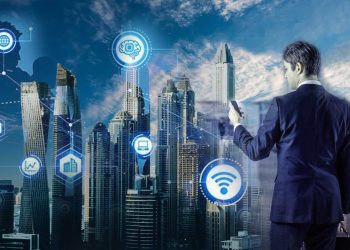If the COVID-19 outbreak has reminded us anything over recent months, it is that the future of the country and governments will be increasingly driven by a shift towards digital and data in their operations. Embracing modern innovations and digitalization will be pertinent to making better decisions and delivering improved social, economic and environmental outcomes that have a lasting impact. Although national and local governments are already working to embrace these changes, there’s a lot more to do as technology is constantly shifting and expanding. Digital priorities of today lie on how far governments still have to go and what it’ll take to get there.
COVID-19 Pandemic Highlighted Several Shortcomings
After the pandemic outbreak, digital technologies were harnessed on a massive scale to support the public-health response to COVID-19. The crisis vaulted the government headfirst into the next stage of digitization.
Technology was leveraged on an unprecedented scale for several disaster response measures, such as – case identification, population surveillance, contact tracing, communication between various government departments and the public, and evaluation of interventions based on mobility data.
While numerous technology-driven initiatives were rolled out at a massive scale, the pandemic also demonstrated just how far many government agencies still must go to become truly digital-first organizations.
People wanted the government to speed the cure and respond to the pain and suffering, pinpoint the hotspots, and prevent the spread of the virus, but due to massive demands, all the demands could not be accommodated. Government agencies of several states fell apart; for instance, websites crashed, phone lines were overwhelmed, and payouts were delayed.
Only about 20% of the government’s annual spending on IT is dedicated to modernization, but after the pandemic additional $1 billion has been dedicated to the technology modernization fund, but that is not enough, it seems.
- Several government IT systems are decades old and need to modernize to provide better services to citizens.
- Government agencies’ critical legacy systems are running unsupported hardware and software, outdated programming languages, and operating with known security vulnerabilities.
- Some of the most important agencies—the health, education, transportation departments, and human services have not revealed their modernization plans yet.
Future Directions
Technology experts stress the importance of building coalitions between the government and science to implement technologies like open cloud, quantum computing, artificial intelligence, IoT, 5G, and blockchain. It’s time to move from ad hoc application of digital to designing and implementing digital technologies to be embedded across various government organizations.
Here’s what will be required to be “digital further.”
- Adoption of hybrid cloud approach: In this approach, legacy systems are combined with new approaches. This will help to push government IT architectures toward not only long-term but sustainable transformation.
- Using Off-the-shelf software and services: This approach will help free up federal workers to focus on more complex decisions. It will also decrease fraud and waste.
- Greater authority needs to be given to CIOs: This will enable them to help other agency chiefs develop and execute modernization strategies.
Some of the key components of digitalization that will directly help governments to improve services will be:
- Personalization: Services tailored to the individual’s needs, interests, and circumstances. Personalization requires a customized approach as opposed to taking a “one size fits all” approach.
- Seamless Experience: By seamless experience, we mean no hoops to jump through, no frustrating barriers – overall no effort on the part of citizens.
- Proactive and anticipatory approach: This means anticipating needs and potential problems based on data analysis. This will enable governments to serve the citizen and business needs proactively.
Final Words
Its high time governments focused on innovation and transformation. This will help them make their services more effective and efficient to provide better services to everyone. But being a truly digital government is not a one-time effort; it will require continued change and regular analysis of what worked and what didn’t.








